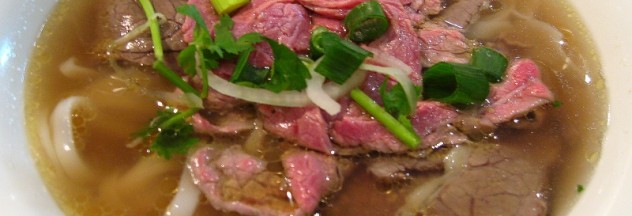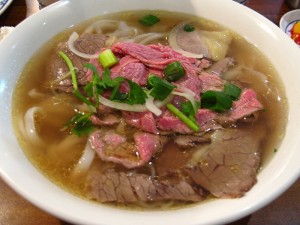Vietnam is a world-class tourist destination because of its breathtaking landscape. But another thing it is famous for is its food, particularly its pho, which is not only uniquely and absolutely delicious, but has become like a mark of the country’s rich history and culture.
There are many stories regarding the origin of pho. One version states that it is a variation of the pot-au-feu, a French beef stew dish. Another theorizes that it came from the Chinese beef noodle soup, while some say that it really originated from Vietnam, a traditional noodle dish accompanied with buffalo meat. According to historians, pho found its fame in the two major Northern cities of Ha Noi and Nam Dinh during the French colonial period wherein it was sold by vendors who carried a big pot of it on the streets. Through time, different versions of pho were made, by vendors and home cooks who used ingredients that were largely available and the cheapest especially at a time when the country was at war and people were suffering.
In the 19th century, Vietnam was predominantly an agricultural country. Cows were raised to help with land cultivation and rice farming and not as a source of food. They were so vital to the country’s agricultural sector that laws were implemented banning cows from being slaughtered for meat with a heavy punishment for those who would be caught. Beef was so difficult to find that pho shops had to close on Mondays and Fridays because there was simply no supply. Beef was therefore expensive and the local residents couldn’t afford it anyway so eating pho with beef (Pho Bo) and cow meat in general was a rare practice.
Because of this, pho vendors looked for an alternative and used chicken as meat in the pho. Called Pho Ga, pho with chicken meat has a gentler aroma than Pho Bo (pho with beef). Either fatty or lean meat can be used, both producing a delicious taste of the dish.
Perspective about beef changed in the 20th century when people began to migrate to the cities to work in offices and factories. Pho vendors still sold their product in the streets, but this time with beef as the meat. But this new version of the dish found its success not so much in the meat than in its broth. During difficult times like war or when people are simply hard up, pho is served without meat. That is why it is crucial that the broth be perfect with or without meat. A good broth must be clear and aromatic with different herbs and spices such as cinnamon, cardamom, coriander seeds, cloves, star anise, onion, pepper and cow bones. The dish must be boiled for around six hours in order for all the ingredients to totally mix and the diner can taste the full flavor of the pho. On an amusing note, most pho shops were called by the owner or founder’s name, e.g. Pho Hien, Pho Thin or Pho Co.
Pho is such an integral part of the Vietnamese people’s daily life that it is eaten at different times of the day: at breakfast, lunch, dinner and even late-night snacks. It is even served with eggs and Chinese crullers or oil sticks for a full enjoyment of the dish. The eggs are poached in boiling water and can either be rare, medium or well-done, depending on the customer’s taste. The crullers on the other hand must be crunchy and crispy and can be eaten separately or dipped into the broth, also depending on the diner’s preference.
Pho today has come a long way and have become high-end in some versions with classy restaurants using expensive ingredients such as foie gras, Kobe and Wagyu beef, and can can cost as much as US$50-100 a bowl. For an authentic taste and feel of pho though, the best place to buy and eat it is still on the streets at a cheap price of $2 but with the original, traditional ingredients and fresh air of the outside.
Pho’s origin and development through time is so interesting that it’s no wonder it’s an important part of Vietnam. With every bowl of pho you eat, whether you buy it from the train, a boat, on the street or a fancy diner, you are taking a part of Vietnam’s history and culture with you, and that is a delicious way of learning.

